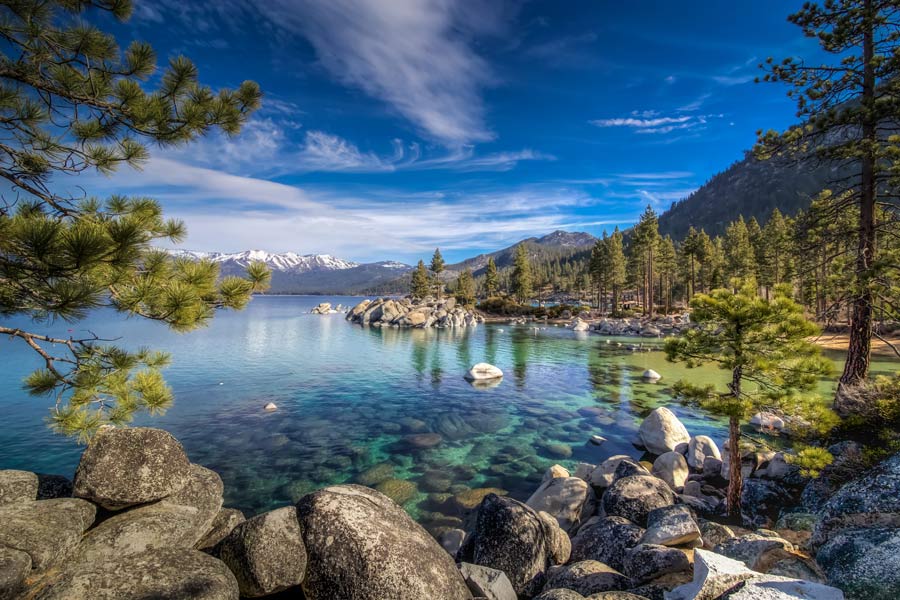Critical reforestation efforts underway in Eldorado National Forest
American Forests is working around the clock to rebuild forests ravaged by fires. On Sept. 5, American Forests, in collaboration with the U.S. Forest Service, continued a significant reforestation initiative in Eldorado National Forest, located in Peavine Ridge, California. This effort is part of a broader strategy to address the critical reforestation needs in the Northern Sierras, where American Forests, CAL FIRE, and the Forest Service across California has been intensifying its cone collection activities.
Why 2024 Is a Pivotal Year
The urgency of these efforts cannot be overstated. The 2024 wildfire season in California has already surpassed the five-year average in terms of burned area. According to the U.S. Forest Service, national forests alone require restoration across at least 3.6 million acres. To address the 1.5 million acres in need of reforestation statewide, the U.S. must significantly ramp up its seed collection efforts. Without an adequate seed supply, wildfires will continue to outstrip our replanting capabilities.
Fortunately, 2024 has brought a promising increase in cone production. Varieties such as Sugar Pine, Jeffrey Pine, and Ponderosa Pine are experiencing bumper crops, presenting a rare opportunity to collect the seeds essential for reforestation. This surplus is crucial for enhancing seed supply and fostering the growth of disease-resistant trees capable of withstanding climate change.
On the Ground: What to Expect
The reforestation process involves professional tree climbers scaling heights of up to 80 feet to collect cones from a variety of landscapes. These efforts are especially vital in areas that have been severely impacted by high-severity wildfires, leaving behind extensive burn scars.
Visitors to the U.S. Forest Service’s Placerville Nursery can see the reforestation pipeline in action. The nearby Pacific Southwest Research Station offers insights into how seed genetics are being used to develop more climate-resilient forests.
While the nursery and research station are not regularly open to the public, they play a crucial role in the reforestation process. Cones are processed, and seeds are grown into seedlings for future planting at the nursery. At the research station, geneticists study these seeds to enhance forest resilience to climate change.
Expert Insights
Leana Weissberg, California State Director at American Forests, emphasized the strategic importance of selecting the healthiest trees for cone collection, working closely with genetic experts to ensure diverse genetic material. This diversity is crucial for adapting to future climate conditions.
Jesse Cone, District Silviculturist for the Eldorado Forest at the U.S. Forest Service, underscores the enormity of the task. “It’s a harsh world for our seedlings to grow in. We are starting at square one and we have so much land to cover and plant,” Cone said. The goal is to plant dense clusters of trees to ensure their survival and resilience, with a focus on creating forests similar to those that existed prior to fire suppression—forests with fewer, larger trees that are more resilient to drought and climate change.
Ongoing Challenges and Future Goals
Reforestation efforts are not without their challenges. Cone collection is highly time-sensitive and physically demanding, requiring precision and safety measures. Once collected, cones are stored in coolers to simulate winter conditions before they are processed and planted.

“We are all at the bidding of the cones,” Weissberg said.
Melissa Paulsen, Cone Collection Management Lead, oversees the complex logistics of contracting and scheduling cone collection. Her role is crucial in ensuring that critical seeds are collected and processed in time.
Looking Ahead
As reforestation plays a defensive role in wildfire-prone environments, it is equally important to manage unburned forests and reduce wildfire risks. According to Weissberg, reforestation is just one part of a broader strategy to create climate-resilient forests. “We use historic forests as a guide, but we must adapt to future climate conditions,” she said.
The collaborative efforts of American Forests, the U.S. Forest Service, and other partners aim to chip away at the enormous task of reforestation, with the understanding that the process is slow but essential. “Foresters are naturally patient,” Cone said, “because we have to wait for trees to grow.”
As the reforestation initiatives continue, the focus remains on creating resilient forests capable of withstanding the challenges posed by climate change and wildfire. The work being done today lays the groundwork for a more sustainable and resilient future for California’s forests.

Support Local Journalism

Support Local Journalism
Readers around the Lake Tahoe Basin and beyond make the Tahoe Tribune's work possible. Your financial contribution supports our efforts to deliver quality, locally relevant journalism.
Now more than ever, your support is critical to help us keep our community informed about the evolving coronavirus pandemic and the impact it is having locally. Every contribution, however large or small, will make a difference.
Your donation will help us continue to cover COVID-19 and our other vital local news.









